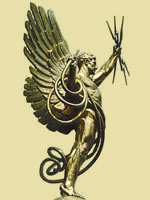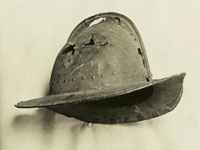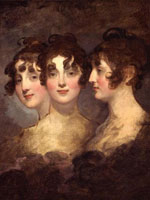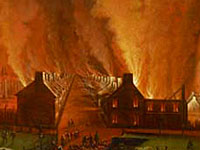Switzerland County Historical Museum
"Our mission is to unite those people interested in the history of Switzerland County, Indiana, and surrounding region, for its protection, preservation, and promotion to the public."
"Our mission is to unite those people interested in the history of Switzerland County, Indiana, and surrounding region, for its protection, preservation, and promotion to the public."
"Headquartered in this exquisite federal home of William Kimball Eastman, the CHS serves all areas of the Conways. The museum features period rooms representing 1818 through 1945. Eastman Lord House Museum in Conway was named to the National Register of Historic Places in 2001."
"The galleries at the Southwest Museum of the American Indian are closed to the public at this time. However, the Museum Store is open on Saturdays and Sundays and we will continue to offer great programs and events throughout the year.
The galleries are closed due to extensive rehabilitation of the building and conservation of its rare collection of Native American artifacts, with the goal of moving most of the collection to a new state-of-the-art home by 2009. Plans call for the infrastructure improvements to the Southwest Museum to be completed by 2010, when the building will be open for a new cultural use, fulfilling founder Charles Lummis' vision and belief that all indigenous peoples be understood."
Visitor to this Victorian mansion can step back into family life in Washington at the turn of the century. The Victorian interior decorations and furnishings remain largely unchanged since it was built in the late 19th century. Looking very much like a medieval castle, this 31-room mansion was designed by John Granville Myers for local brewer Christian Heurich, between 18941896. The interior is predominately Renaissance and Rococo Revival.
The house offers tours.
Guided tour of the Kenan family ancestral home, a restored Southern plantation of the 1800s. Eleven rooms, 12 dependencies including garden shop, wine cellar, carriage house, servants quarters, chicken house, smokehouse, overseer's cottage, woodshed, tool house, wash shed and necessary house(bathhouse and privy). Also, Visitor's Center Exhibit Hall, 13-minute video and gift shop. Herb garden and recently added rose garden. There is an admission charge.
What did Colonial America and Medieval Europe have in common? The website Building Community: Medieval Technology and American History, developed at the University of Pennsylvania through a grant from the National Endowment for the Humanities, demonstrates that colonial technology was a transplantation of Old World ways of doing and making to a new continent.
Building Community, funded through the We the People initiative of the National Endowment for the Humanities, is designed for grade 612 classrooms. The site incorporates textual and visual materials, including a film on a Viking Age iron smelt, projects such as building a functioning clay bread oven in two sizes, a wealth of pictures from English and Colonial American historical sites, and original documents. Textual materials include short essays called "one-minute essays" and in-depth articles to give the teacher more background. All material is marked with icons indicating subject matter, as well as presence of original documents and lesson plans.
Through a concentration on flour milling and iron manufacture, students and teachers can glimpse early industrial processes while learning how experiences varied from north to south, from rural to urban areas in response to multinational, geographical, and environmental variables across the colonies. The in-depth essays for teachers offer suggestions for exercises that help define these differences. For example, the in-depth article America: The Land of Opportunity: Manufacturing in Colonial Pennsylvania: Bethlehem looks at the Moravian community of Bethlehem, PA. Materials and suggested lessons encourage upper elementary and middle school students to think about the social, agricultural, industrial, and religious inner-relationships necessary to build a strong community and provide background essays, activities, suggested discussion points, resources, and ideas for applying materials to state standards.

How did innovation and technology change life in the 19th century?
There were two technological innovations that profoundly changed daily life in the 19th century. They were both “motive powers”: steam and electricity. According to some, the development and application of steam engines and electricity to various tasks such as transportation and the telegraph, affected human life by increasing and multiplying the mechanical power of human or animal strength or the power of simple tools.
Those who lived through these technological changes, felt them to be much more than technological innovations. To them, these technologies seemed to erase the primeval boundaries of human experience, and to usher in a kind of Millennial era, a New Age, in which humankind had definitively broken its chains and was able, as it became proverbial to say, to “annihilate time and space.” Even the most important inventions of the 19th century that were not simply applications of steam or electrical power, such as the recording technologies of the photograph and the phonograph, contributed to this because they made the past available to the present and the present to the future.
The 1850 song, “Uncle Sam’s Farm,” written by Jesse Hutchinson, Jr., of the Hutchinson Family Singers, captured this sense that a unique historical rupture had occurred as a result of scientific and social progress:
Our fathers gave us liberty, but little did they dream
The grand results that pour along this mighty age of steam;
For our mountains, lakes and rivers are all a blaze of fire,
And we send our news by lightning on the telegraphic wires.
Apart from the technological inventions themselves, daily life in the 19th century was profoundly changed by the innovation of reorganizing work as a mechanical process, with humans as part of that process. This meant, in part, dividing up the work involved in manufacturing so that each single workman performed only one stage in the manufacturing process, which was previously broken into sequential parts. Before, individual workers typically guided the entire process of manufacturing from start to finish.
This change in work was the division or specialization of labor, and this “rationalization” (as it was conceived to be) of the manufacturing process occurred in many industries before and even quite apart from the introduction of new and more powerful machines into the process. This was an essential element of the industrialization that advanced throughout the 19th century. It made possible the mass production of goods, but it also required the tight reorganization of workers into a “workforce” that could be orchestrated in various ways in order to increase manufacturing efficiency. Individuals experienced this reorganization as conflict: From the viewpoint of individual workers, it was felt as bringing good and bad changes to their daily lives.
On the one hand, it threatened the integrity of the family because people were drawn away from home to work in factories and in dense urban areas. It threatened their individual autonomy because they were no longer masters of the work of their hands, but rather more like cogs in a large machine performing a limited set of functions, and not responsible for the whole.
On the other hand, it made it possible for more and more people to enjoy goods that only the wealthy would have been able to afford in earlier times or goods that had never been available to anyone no matter how wealthy. The rationalization of the manufacturing process broadened their experiences through varied work, travel, and education that would have been impossible before.
J. D. Bernal, Science and Industry in the Nineteenth Century. Bloomington: Indiana University Press, 1970. First edition published 1953.
Thomas Parke Hughes, American Genesis: A History of the American Genius for Invention. New York: Penguin Books, 1989.
Jack Larkin, The Reshaping of Everyday Life: 1790-1840. New York: Harper Perennial, 1989. First edition published 1988.
Walter Licht, Industrializing America: The Nineteenth Century. Baltimore: Johns Hopkins University Press, 1995.
Carroll Pursell, The Machine in America: A Social History of Technology. Baltimore: Johns Hopkins University Press, 1995.

I am teaching The Scarlet Letter in my AP Literature class and need some higher-level resources that discuss the Puritan lifestyle, from dress to their interactions with natives to their belief systems. Do you know of several resources?
On the material culture of Plymouth Colony, including descriptions of housing, furniture, clothing, and family life and relationships, you could look at John Demos, A Little Commonwealth: Family Life in Plymouth Colony, or his, Remarkable Providences: Readings on Early American History. Also good is David Hackett Fischer, Albion’s Seed: Four British Folkways in America, section on “The Exodus of the English Puritans, 1629-41.”
Easily the most influential book about the New England Puritans' religion has been Perry Miller's 1956, Errand into the Wilderness. More recent and well-regarded books include Sacvan Bercovitch, The Puritan Origins of the American Self and David D. Hall, Worlds of Wonder, Days of Judgment: Popular Religious Belief in Early New England.
Online, Professor Donna M. Campbell’s valuable web pages on “Puritanism in New England” may help begin to clarify some of the Puritans’ religious beliefs.
Also online, you can find plenty to read and assign in volumes 1 and 2 of A Library of American Literature, edited by Edmund Stedman and Ellen Hutchinson, and compiled and published in 1887, and which is available via Google Books. The editors included diverse short selections from Puritan writers describing their inner and outer lives and their adventures in settling in America.
A newer anthology of Puritan writings, focusing exclusively on religion (and not available on the web), is The Puritans in America: A Narrative Anthology, edited by Alan Heimert and Andrew Delbanco, published in 1985 by Harvard University Press.
Teaching The Scarlet Letter and also reading historical works from and about the Puritans provides an opportunity to emphasize to students that Hawthorne's work was one of historical fiction, written almost two centuries after the events it imagined. Students can easily understand that the book is fiction because the specific people and events its described did not actually exist. They may need some help, however, in understanding that Hawthorne's Puritan world might differ from the real Puritans' world, or in understanding that Hawthorne's fictional enterprise was deeply imbued with mid-19th-century sensibilities and preoccupations. A 17th-century Puritan would never have written a book like it.
Sacvan Bercovitch, The Puritan Origins of the American Self. New Haven: Yale University Press, 1978.
David D. Hall, Worlds of Wonder, Days of Judgment: Popular Religious Belief in Early New England. Cambridge: Harvard University Press, 1990.
Alan Heimert and Andrew Delbanco, eds. The Puritans in America: A Narrative Anthology. Cambridge: Harvard University Press, 1985.
John Demos, A Little Commonwealth: Family Life in Plymouth Colony. 2nd edition. New York: Oxford University Press, 2000.
John Demos, Remarkable Providences: Readings on Early American History, rev. edition. Boston: Northeastern University Press, 1991.
David Hackett Fischer, Albion’s Seed: Four British Folkways in America. New York: Oxford University Press, 1989.
Perry Miller, Errand into the Wilderness. Cambridge: Harvard University Press, 1956

What was life in the American colonies like for teenagers?
In colonial America, there were not really any “teenagers” as we know them. Of course, children passed through the decade that we know as the “teens,” but that stage of their lives was not the carefree, exploratory period that today’s youth experience. Children grew into adulthood more quickly than they do today, and by the time a child entered their teen years, they were already on a path toward their life’s occupation. Although a youth’s path to adulthood depended on their family’s socio-economic status, regardless of wealth, young men usually learned their trade through some form of apprenticeship.
Children from poor families were often bound out to servitude at a young age, earning their keep while learning a trade. In the seventeenth century, 80% of the Chesapeake’s immigrants were indentured servants. Many of these servants were over the age of 20, but a significant number were young men and women still in their teens. In return for their passage to the Chesapeake, these servants agreed to work for a period of time, usually between four and seven years, without pay. During their service, masters provided food, clothing and shelter, and at the end of their term, servants received “freedom dues,” usually three barrels of corn and a suit of clothes. Many of these youths were orphans, but some were from indigent families who could not care for their children, and therefore sent them off to find their own fortunes. But a young person did not have to travel across the Atlantic to enter into servitude. At the age of 12, Benjamin Franklin was apprenticed to his brother, James, a Philadelphia printer. In his autobiography, Franklin recalled that his brother was “passionate” and often beat him. “Thinking my apprenticeship very tedious,” Franklin stated, he “was continually wishing for some opportunity of shortening it.” At the age of 17, Franklin ran away from his brother’s household.
Children of wealthier families also took on considerable responsibility at a young age. Children from families of middling means often learned how to read and write, especially if they lived in urban areas. By the time they were in their mid-teens, sons were at work in the family farm or business, learning the trade that they would probably practice the rest of their lives. In the wealthiest families adolescent boys were often sent to boarding school, and then when they were around 15 years of age, they entered institutions such as Harvard, William and Mary, or Yale. After finishing their formal education, many took apprenticeships as clerks in merchant offices or law offices, or they returned home to follow their fathers’ profession.
Only young men were allowed to pursue higher education. Although there were a few opportunities for girls to receive a more extensive formal education in the colonial period, most families kept their daughters at home to learn how to run a household and to be a dutiful mate for her future husband. There were rare exceptions to this convention, however. In 1738, when Eliza Lucas was 15, her father moved her and her mother from Antigua, West Indies, to a plantation near Charleston, South Carolina. Her father’s travels with the army and her mother’s ill health forced Eliza to manage the family business. In a letter to a woman friend, Eliza Lucas described her duties: “I have the business of 3 plantations to transact, which requires much writing and more business and fatigue of other sorts than you can imagine.” But, she assured her friend that “I think myself happy that I can be useful to so good a father, and by rising very early I find I can go through much business.” Lucas assumed an unusual burden as a young woman, but eventually she followed a somewhat conventional path – she married a planter and had children, yet she continued to hold considerable responsibility in the management of her husband’s plantations.
Brewer, Holly. By Birth or Consent: Children, Law, and the Anglo-American Revolution in Authority. Chapel Hill: University of North Carolina Press, 2005.
Demos, John. A Little Commonwealth: Family Life in Plymouth Colony. New York: Oxford University Press, 1970.
Herndon, Ruth Wallis and John E. Murray, eds. Children Bound to Labor: The Pauper Apprentice System in Early America. Ithaca: Cornell University Press, 2009.
Marten, James, ed. Children in Colonial America. New York: New York University Press, 2007.
Eliza Lucas Pinckney. The Letterbook of Eliza Lucas Pinckney, 1739-1762. Ed. by Elise Pinckney and Marvin R. Zahniser. Chapel Hill: University of North Carolina Press, 1972.

Who started the Quebec City fire of June 28, 1845? It was depicted in an 1848 painting by Joseph Légaré called The Fire in the Saint-Jean Quarter, Seen Looking Westward. My art teacher mentioned something about a slave breaking out of her master's home, and being so angry she burnt down their house and started the fire. She wound up being hung. Is this true?
I have been unable to find anything about an angry slave being responsible for the fire. And what I have found appears to make such a story highly unlikely.
Quebec suffered two major fires in 1845, exactly one month apart.
On the 28th of May, in the late morning of a scorchingly hot day, a fire began at a small tannery owned and overseen by a Mr. Richardson on Arago Street near Saint-Vallière Street in the St.-Roch district. The fire began when a boiler that was used to heat leather dye burst. Church bells in the St.-Roch section began ringing in alarm and a small crowd gathered outside the tannery and started “ill-directed efforts to extinguish the flames,” according to a military officer who happened onto the scene.
The intense heat of the day, combined with a very stiff wind, spread the fire quickly through the streets of St.-Roch, lined with small wooden buildings packed closely together. The district of St.-Roch lies in the lower section of the city between the river and a cliff leading to the upper section of Quebec City. The high wind blew into the heated air above the fire and swirled against the cliff into a shifting vortex that carried sparks in unpredictable directions, seemingly in pursuit of terrified people trying to escape the fire, blocking their escape. The fire was only stopped when the mayor ordered the military to blow up a line of houses as a firebreak to protect the warehouses and commercial district next to the river. In eight hours, the fire of May 28 killed 50 people, destroyed about 3,000 shops and sheds, roughly 1,650 houses, and left many thousands of people homeless. About a third of the city was left in ruin.
About 11 o’clock on the night of June 28th, another fire broke out in a shed in back of the house of a notary, M. Texsier, on d'Aiguillon Street, near d'Youville Street in the Saint-Jean Baptiste section of the city, which is located next to the St.-Roch section that had been destroyed the month before. According to the Quebec Mercury at the time, the fire “arose from the emptying of a can of hot ashes on a dunghill.” This strongly suggests that the fire was not deliberately set.
As before, the weather had been hot and dry that day and a gale wind once again blew over the city. Throughout the night of June 28th, the fire spread out and by morning the entire St.-Jean section, another third of the city, along with 1,300 houses, churches, and schools, had been destroyed. During the night, thousands of people who had fled the St.-Roch fire and had settled temporarily in the St.-Jean section again had to flee.
Joseph Légaré’s painting of this fire, a copy of which is now in the Art Gallery of Ontario, depicts “an apocalyptic vision of orange flames and fiery sparks heat[ing] up the black sky in an earthly inferno,” as art historian Anne Newlands says in her book, Canadian Art: From Its Beginnings to 2000. Many of the terrified residents the night of that fire did indeed see something like an apocalypse, a providential pursuit of the city. Newspapers reported that many people saw terrible angels of flame in the sky above the city that night, which skeptics attributed to reflected mirages playing across the layers of heated air. One month later, practically the entire city stayed awake and on edge during the day and night of July 28th, on the possibility that Quebec would be revisited by a third and final fire. But that did not happen.
In all, the two fires destroyed two-thirds of the city, but I have found no evidence that either of the fires was caused by anything other than accidents.
Joseph Légaré, The Fire in the Saint-Jean Quarter, Seen Looking Westward (1848), Art Gallery of Ontario. See also the copy at the Musée national des beaux-arts du Québec.
John Murray, View of Québec, Canada, from the river St. Charles, shewing the conflagration of June 28, 1845, and the ruins of the fire of May 28th, 1845 (1845), colored ink on paper, at the McCord Museum in Montreal.
Royce G. Tennant, Lerisa Huntingford, Canada in the 1840: The Nation’s Illustrated Diary. Victoria, BC: Trafford, 2004.
George Gale, Quebec ‘Twixt Old and New. Quebec: The Telegraph Printing Company, 1915.
“The Late Calamitous Fire at Quebec,” The Albion, A Journal of News, Politics and Literature, September 20 1845, pps. 453-454.